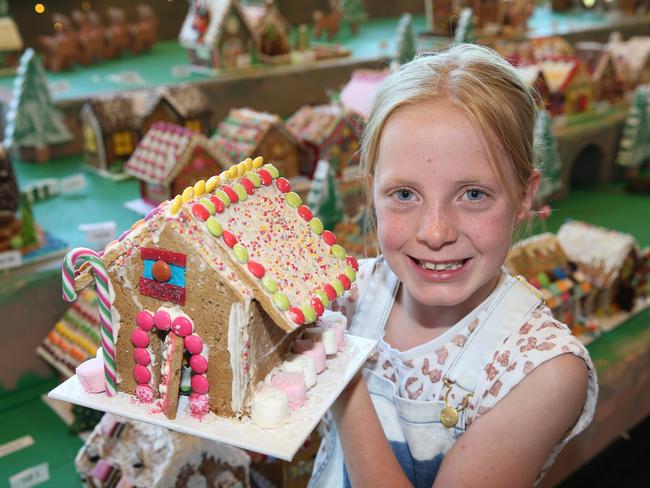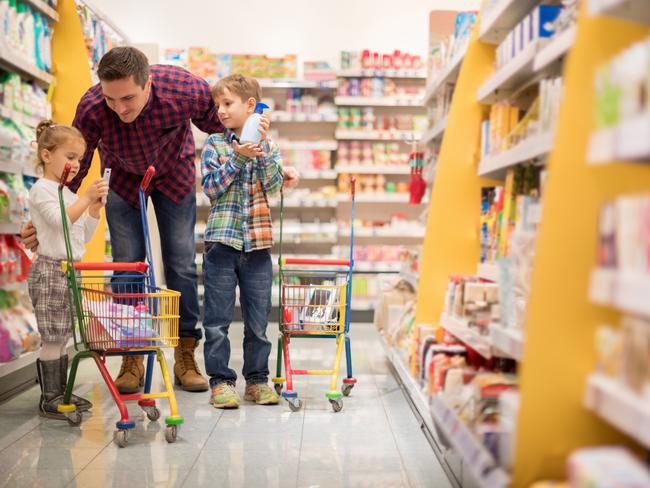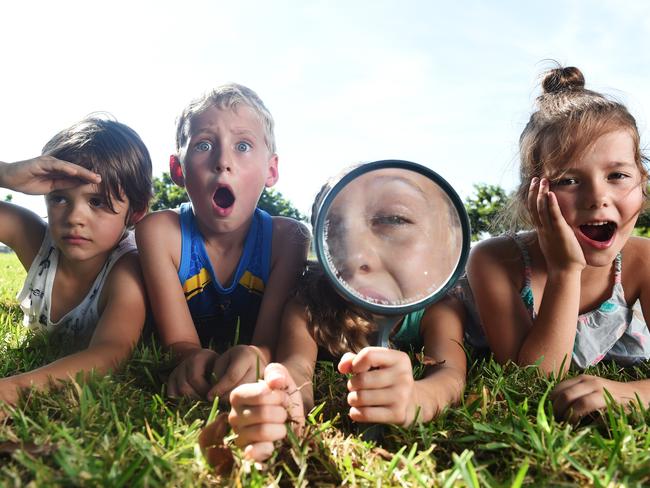What your kids’ teachers wish you did on the weekend
THESE five things could actually make a big difference to how you child feels about school this year — and the best part is they won’t even know they’re learning.

Parenting
Don't miss out on the headlines from Parenting. Followed categories will be added to My News.
- Games to help your child become a better student
- $20 challenge to teach your child financial literacy
WHAT are you doing with the kids this weekend?
We’ve grilled the nation’s leading teachers about what they really wish parents spent time doing with their children, and there’s not a times-table or homework book in sight.
Check out our leading teachers’ top tips, and for more, see our Summer School special on supercharging your kids’ learning this year, presented in partnership with the Commonwealth Bank and Evidence for Learning.
1. BEING BRAVE
Mikelle Miegel, a leading principal working in South Australia, says a day of summer swimming fun is the perfect environment to teach your kids something they’ll never get in a classroom: a real sense of the achievement that’s possible from showing courage.
For a toddler, that might be a challenge to put their heads underwater and blow bubbles, while Mum or Dad counts along — and for older children, having a go at waterskiing, or finding a safe place to jump in for maximum splash.
“Discuss safety together,” she said. “Learning a new skill is great for stretching the brain — discuss the mindset or approach to learning that the student displays.”

Don’t let this become a show and tell session … make it hands-on and allow them to do it.
2. MAKING A GINGERBREAD HOUSE
A year 6 pupil will absorb up to 6000 extra hours of learning a year while at home — and school principal Michael Devine says it’s up to parents to make it count.
Cooking is a great place to start.
“Get kids engaged by letting them come up with ideas about what they want to cook — let them find a recipe through books or the internet and encourage research and analytical skills,” said Mr Devine, principal of Western Port Secondary College and a winner of the Commonwealth Bank Teaching Awards.
“It’s important that parents don’t let this become a show and tell session … make it hands-on and allow them to do it.
“Measure out a cup of flour and ask how much do you think that might weigh, then check it on the scales.
“Gingerbread houses can be a great way to look at design and construction elements — considering how best to get the structure to stand together, along with creativity, design and decoration.”

3. STICK YOUR HEADS UNDER THE BONNET
When Kevin Mackay was teaching a Year 6 class in Ballarat, he wanted them to learn about numbers. So he took them out to one of his old cars, popped the bonnet, opened the doors and encouraged the pupils to find as many numbers as they could.
The odometer and tachometer were obvious. So were the clock and the radio. But after that, he couldn’t believe how many numbers they found.
“It occupied the class for two whole weeks,” said Mr Mackay, who is now 74 and the principal of Dandenong North Primary in Victoria, as well as part of the Bright Spots Schools connection, a network of high-performing leaders working in low socio-economic areas.
“I was just amazed — after that, I took them down to the local Holden dealership and I told them that every car part had a number, and that’s how you order new parts.
“The guys at the service department were so impressed they gave them some part manuals and before you knew it, they knew the name and its part number — so you’d have to say ‘we need a tail shaft for the so-and-so Holden’ and they could give you the part number.
“The opportunities for learning were endless.”

4. DOING THE GROCERIES FOR $20
Could you buy bread, sandwich fillers, drinks and a treat for four people — for the princely sum of $20?
The $20 supermarket challenge is a great way to give young people responsibility, creativity and financial literacy, says Queensland teacher Rosalie Reynolds.
“Adding the decimal amounts together and understanding how products can be sold in different amounts is vital — help the child select the same product in different sizes to discuss the advantage or disadvantage of the chosen size and its value.”
She said shopping also gave children the opportunity to have the mental image and physical feeling of the mass and capacity of items, which helped cement basic maths concepts.
“Often children find it hard to understand what a kilo looks and feels like,” Ms Reynolds said.
“The produce section provides the opportunity to experiment with how many apples, zucchinis or bananas weigh one kilo.
“Also, in the dairy aisle, the difference or similarity in the capacity of containers — despite the shape of the container — can help dispel misconceptions that if it is bigger in size, it may have bigger capacity or mass.”

5. GET YOUR NINJA ON
An extreme scavenger hunt, searching for lollies or another kind of prize, is a great way to have an adventure with your kids.
Start with a simple course and draw a basic treasure map. Set boundary markers with coloured twine, ribbon or bunting hung from fenceposts, playground equipment or trees — and then hide or bury your ‘treasure’ at points marked on the map with an X or another symbol.
Principal Christine Roberts-Yates, a 2017 winner in the Commonwealth Bank Teaching Awards for excellence, says you can amp up the energy for older kids by making an orienteering relay race, a bit like TV’s Ninja Warrior show.
“Small teams of three or four children are required, and each team commences the race behind the same line — the first child has a map, which is used to negotiate through the course,” Dr Roberts-Yates said.
“The course can include climbing a wall, crawling underneath a rope net, zigzagging through a line of cones, jumping over hurdles, dragging a tyre or throwing beanbags into a bucket.
“As soon as the first child gets to the end of the course, the map is deposited in a box before sprinting back to tag the teammate, who then picks up the map and continues through the course.”
